Karen: "Steve wants to see some monoliths."
Me: "What, like Stonehenge and stuff like that?"
Karen: "Exactly."
And thus, the Monolith Tour was born. It was only fair really. Steve was going to allow himself to be dragged to afternoon tea at Fortnum & Mason, so the least we could do was set aside a day to do something that he was genuinely keen about. (Actually we could have done far far less, but we are nice people. Also, monoliths are cool.) So I set about devising a plan to ferry us about the Wiltshire countryside, where everyone knows the best monoliths - or at least the best ones within striking distance of London - are located.
Stonehenge is the obvious target of course, but the trouble with Stonehenge is that it's generally crammed with tourists and completely cordoned off so you can't actually get up close to the stones themselves. Real monolith aficionados know that the place to go for big rocks is Avebury, a tiny village 17 miles north of Stonehenge and the site of largest stone circle in Europe. It's also easily accessible, being about a two hour drive from London. That's where we started.
(And yes, we did drive. I was going to include the story of the car rental here, but as with all my driving experiences in the UK it was so ridiculously frustrating that the tale ended up comprising about a third of the whole post and pushed the word count up over 3,000 so perhaps I'll just save that for another day.)
The standing stones at Avebury actually form three circles, a huge one with a diameter of greater than 330 metres, and two smaller circles inside it. It's also got a henge, a term which has nothing to do with stones and actually describes a large ditch surrounded by an earthen bank. The stone circles are inside the henge and were constructed around 2600 BC for reasons unknown, but thought to be ceremonial or ritualistic.
Like most of these neolithic sites, Avebury has sustained some damage over the millennia, likely starting with the rise of Christianity in the medieval period, when villagers in Avebury toppled several of the stones, which were seen to be pagan and devilish. (They also managed to crush an itinerant barber-surgeon in the process.) The destruction reached its peak, though, in late 17th and 18th centuries, likely due to the rise of puritanism when "The majority of the standing stones that had been a part of the monument for thousands of years were smashed up to be used as building material for the local area. This was achieved in a method that involved lighting a fire to heat the sarcen, then pouring cold water on it to create weaknesses in the rock, and finally smashing at these weak points with a sledgehammer." (Wikipedia, of course) They sure knew how to have a good time, those Puritans.
Nevertheless, there's still a lot to see at Avebury. For instance, there's the Alexander Keiller Museum, named after the wealthy businessman and archeologist who, in the 1930's, managed to combine his personal fortune and his interest in archeology by the simple expedient of buying big chunks of Avebury so he could preserve it and do his excavations in peace. He also re-erected a lot of the stones that had merely been pushed over (as opposed to being turned into gravel). And, in a lovely tie-in to last week's blog about afternoon tea, Keiller's fortune came to him because he was the sole heir to the Dundee marmalade business. Nonetheless, with a heavy schedule and miles to go before we'd sleep, Karen and Steve and I skipped the museum in favour of wandering around the giant stone circle which slices through a corner of the village itself. (We did, however, patronise the National Trust Tea Shop where they had the best flapjacks I have ever tasted, bar none.)
After Avebury I'd cleverly scheduled a stop at the fantastic but lesser-known West Kennet Long Barrow. This is a site I first visited when I lived in the UK in 1988 and rented a car with a few friends to do our own Monolith Tour. A barrow, for those who haven't read "The Hobbit" is essentially a man made hill built over a gravesite. Therefore, even the most cretinous of readers might be able to deduce that a long barrow is a particularly long hill, built over a long gravesite, which is exactly what West Kennet is. It's one of the many Neolithic burial sites in the area, which is dotted with the hummocks of hundreds of stone age graves.
About two minutes drive down the road from the big hill was the lay-by for the West Kennet Long Barrow. I recall the barrow being very cool in 1988, and current images indicate it still is. It predates Stonehenge by about 400 years, and was in use as a burial place for more than a millennia. Comprised of heavy stones that make up a a multi-chambered tomb, you can actually walk right in and poke around in the chambers that once held human remains. In that way it was much more fun than Stonehenge, so I was determined to show it off to Karen and Steve. The site itself is about 500m off the highway, so it requires a short walk. In 1988 there was no path, you just struck out across a field full of guard cows until you got there. Now there's a proper path, but that didn't really help us this time.
Thwarted at the West Kennet Long Barrow we had no choice but to head to our lunch stop early, a pub lovingly chosen by me to fulfil a rigorous set of criteria set out by Karen. It had to be a proper country pub: dark and low-ceilinged, with real ale, and with ploughman's lunch on the menu. The Ship Inn in the Village of Upavon not only ticked all those boxes, it also had a thatched roof, working wood burning fireplace and a pub dog. And, it turns out, the largest portion of fish and chips any of us had ever seen. Large enough to excite comments from passing diners. Large enough that Steve actually found a harpoon point in his fish.
Thus fortified, and slightly ahead of schedule, we made our way to Stonehenge. I should add that by this time Steve was driving, and doing a fairly credible job of things despite never having driven in the left before. Though he was a bit put off by the exceeding narrowness of the roads and the exceeding nonchalance of the local drivers, who tended to pass with a combination of casualness and speed that indicated they were likely not as worried as we were about returning their fancy rental car without expensive gashes down the sides. And he had a tendency to drift a bit too far left, making those of us seated on the left slightly twitchy. Then against I'm no Mario Andretti either, so I'll jsut shut up about Steve's driving.
So: Stonehenge. I hope this won't be news to anyone, but I'll do the obligatory backstory anyways. Stonehenge is the remains of a Neolithic ring of standing stones and surrounding earthworks, dating back to about 2,000-3,000 BC. There are loads of theories about what it was for, but the alignment of the stones to various important dates on the solar calendar and the discovery of cremated remains on the site indicate that, like Avebury, it had religious or ritualistic significance.
Stonehenge comes on you suddenly, being bizarrely close to the highway. (Which reminds me of a story told to me by a tour guide about an American tourist visiting Edinburgh Castle who asked why they'd built the castle so close to the airport.) The site is now managed by English Heritage, who charge a modest £7.80 admission fee, which includes a very good audio guide. Sadly, it's been a long time since tourists could wander freely among the stones; visitors are now restricted to a roped off pathway around the site, through it's not miles away from the stones themselves. And apparently, if you book well in advance and pay a premium you can get access to the circle itself outside normal opening hours, but even then touching is not allowed. This is in stark contrast to the Victorian era when you could not only walk among and even climb on the stones, they'd actually rent you small hammers so you could chip off a souvenir to take home. Fantastic!
For all it's wonder and grandeur - and it really is quite wonderful and grand - there's only so much time you can spend contemplating a bunch of big rocks from a distance. And though the audio guide is good, it only takes about half an hour to feel like you've got everything you can from Stonehenge and also sufficiently depleted your camera's battery and storage capacity. So with an unexpected window of daylight left at the tail end of the afternoon, we dashed off to one last, bonus site in nearby Salisbury.
Salisbury Cathedral is a magnificent structure, built in the 13th century over a span of just 38 years, and is one of the finest gothic cathedrals in England. It also possesses the tallest spire in the country and, significantly for Karen, was one of the two cathedrals that served as inspiration for Ken Follett's novel "Pillars of the Earth" (Which I also read and enjoyed, having inadvertently purchased the Kindle version from Amazon last year in a "one-click ordering" mishap.) We got to the cathedral in time to have a look around, and it really is quite brilliant.
And, in the kind of random happenstance that occurs gratifyingly often in a country so bathed in history, Salisbury Cathedral had one last treat to offer we humble colonials. It turns out that the Chapter House of the cathedral is home to the best-preserved of the four remaining original copies of the Magna Carta. I think this is what really put us over the top for the day. To see several world-class Neolithic sites, squeeze in an awe-inspiring medieval cathedral, and then find out that, by the way, we could just have a gander at the Magna Carta before we headed home left us all a bit dumbfounded. (No photos allowed of the document itself, unsurprisingly, but I can say it's smaller than you'd expect and the writing is really tiny.)
So the mood was good as we punched coordinates into the satnav (GPS) to get us back to London. We didn't even get discouraged by the stubborn refusal of Digital Debbie to allow us onto the motorway - a quirk that had added at least an hour to our morning journey. Instead, we sought out and found the M3 ourselves and resolutely refused every effort of the satnav to get us to exit for Basingstoke, or Farnborough, or Guildford, or any other of the back roads en route. It was only the next day, about 5 minutes before I returned the rental car, and after I'd ignored the satnav directions all the way to Heathrow Airport and back, that I realized we'd had the stupid thing set to "avoid main roads". No wonder. Still, despite the navigational challenges, and the disappointment of missing the excellent West Kennet Long Barrow, I think I can safely say that the Monolith Tour was a success.
And that almost wraps up the Adventures with Karen and Steve episode of the blog, though there is one more thing I need to tell you about... so do not adjust your dial.
Me: "What, like Stonehenge and stuff like that?"
Karen: "Exactly."
And thus, the Monolith Tour was born. It was only fair really. Steve was going to allow himself to be dragged to afternoon tea at Fortnum & Mason, so the least we could do was set aside a day to do something that he was genuinely keen about. (Actually we could have done far far less, but we are nice people. Also, monoliths are cool.) So I set about devising a plan to ferry us about the Wiltshire countryside, where everyone knows the best monoliths - or at least the best ones within striking distance of London - are located.
Stonehenge is the obvious target of course, but the trouble with Stonehenge is that it's generally crammed with tourists and completely cordoned off so you can't actually get up close to the stones themselves. Real monolith aficionados know that the place to go for big rocks is Avebury, a tiny village 17 miles north of Stonehenge and the site of largest stone circle in Europe. It's also easily accessible, being about a two hour drive from London. That's where we started.
(And yes, we did drive. I was going to include the story of the car rental here, but as with all my driving experiences in the UK it was so ridiculously frustrating that the tale ended up comprising about a third of the whole post and pushed the word count up over 3,000 so perhaps I'll just save that for another day.)
The standing stones at Avebury actually form three circles, a huge one with a diameter of greater than 330 metres, and two smaller circles inside it. It's also got a henge, a term which has nothing to do with stones and actually describes a large ditch surrounded by an earthen bank. The stone circles are inside the henge and were constructed around 2600 BC for reasons unknown, but thought to be ceremonial or ritualistic.
Here you can see just how big a 330m stone circle is, since this is just a corner of it. The small pointy cairns mark the spots where stones are missing.
Like most of these neolithic sites, Avebury has sustained some damage over the millennia, likely starting with the rise of Christianity in the medieval period, when villagers in Avebury toppled several of the stones, which were seen to be pagan and devilish. (They also managed to crush an itinerant barber-surgeon in the process.) The destruction reached its peak, though, in late 17th and 18th centuries, likely due to the rise of puritanism when "The majority of the standing stones that had been a part of the monument for thousands of years were smashed up to be used as building material for the local area. This was achieved in a method that involved lighting a fire to heat the sarcen, then pouring cold water on it to create weaknesses in the rock, and finally smashing at these weak points with a sledgehammer." (Wikipedia, of course) They sure knew how to have a good time, those Puritans.
Nevertheless, there's still a lot to see at Avebury. For instance, there's the Alexander Keiller Museum, named after the wealthy businessman and archeologist who, in the 1930's, managed to combine his personal fortune and his interest in archeology by the simple expedient of buying big chunks of Avebury so he could preserve it and do his excavations in peace. He also re-erected a lot of the stones that had merely been pushed over (as opposed to being turned into gravel). And, in a lovely tie-in to last week's blog about afternoon tea, Keiller's fortune came to him because he was the sole heir to the Dundee marmalade business. Nonetheless, with a heavy schedule and miles to go before we'd sleep, Karen and Steve and I skipped the museum in favour of wandering around the giant stone circle which slices through a corner of the village itself. (We did, however, patronise the National Trust Tea Shop where they had the best flapjacks I have ever tasted, bar none.)
Avebury is fantastic because you can walk right up to the stones, which I did.
I was happy because I'd just had a passable latté and the best flapjack ever.
This is NOT the West Kennet Long Barrow. This is Silbury Hill, just down the road from Avebury and on the way to West Kennet Long Barrow. It's a prehistoric, man made hill (the tallest Europe). I'm sure I climbed it in 1988, but that may be complete bullshit (Nairobi Rob - do you remember if we climbed the hill?). At any rate, it's closed to the public now so all you can do is take a picture and comment on the vast amount of water surrounding the base. Have a look at that water, it becomes important in the next paragraph.
Karen testing the waters. It was, in fact, the wettest summer in the UK since record keeping began, meaning that unless we'd thought to bring hip waders, we were not going to see the barrow without needing to employ a vigorous backstroke.
However, through the magic of the Internet you can get an inkling of how cool the inside of the barrow is. Though I'm pretty sure the prehistoric people who built it did not install the skylight that allow for such good interior lighting.
Karen in the pub. Pint, fireplace, ploughman's lunch on the way. Content.
Steve's enormous fish and chips. I might have been lying about the harpoon,
but it is overhanging the plate on both ends.
but it is overhanging the plate on both ends.
So: Stonehenge. I hope this won't be news to anyone, but I'll do the obligatory backstory anyways. Stonehenge is the remains of a Neolithic ring of standing stones and surrounding earthworks, dating back to about 2,000-3,000 BC. There are loads of theories about what it was for, but the alignment of the stones to various important dates on the solar calendar and the discovery of cremated remains on the site indicate that, like Avebury, it had religious or ritualistic significance.
I bet you already knew what it looked like...
Karen did say that we got closer than she was expecting.
Salisbury Cathedral.
You really have to give those medieval builders credit. The height of the ceiling inside the choir is more than 80 feet. And the spire reaches to over 400.
So the mood was good as we punched coordinates into the satnav (GPS) to get us back to London. We didn't even get discouraged by the stubborn refusal of Digital Debbie to allow us onto the motorway - a quirk that had added at least an hour to our morning journey. Instead, we sought out and found the M3 ourselves and resolutely refused every effort of the satnav to get us to exit for Basingstoke, or Farnborough, or Guildford, or any other of the back roads en route. It was only the next day, about 5 minutes before I returned the rental car, and after I'd ignored the satnav directions all the way to Heathrow Airport and back, that I realized we'd had the stupid thing set to "avoid main roads". No wonder. Still, despite the navigational challenges, and the disappointment of missing the excellent West Kennet Long Barrow, I think I can safely say that the Monolith Tour was a success.
And that almost wraps up the Adventures with Karen and Steve episode of the blog, though there is one more thing I need to tell you about... so do not adjust your dial.


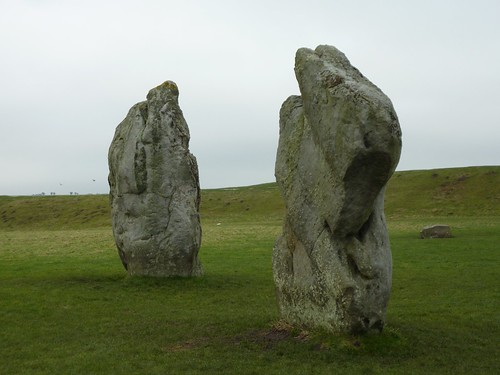

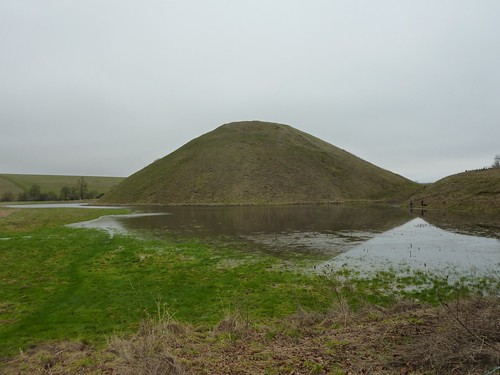
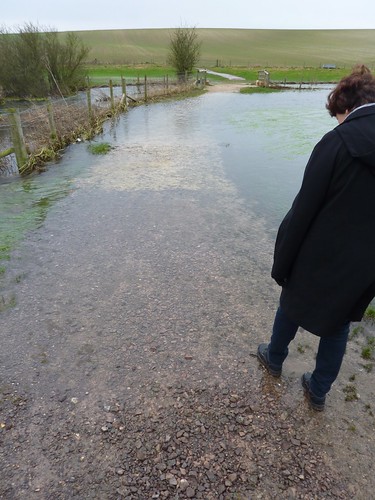

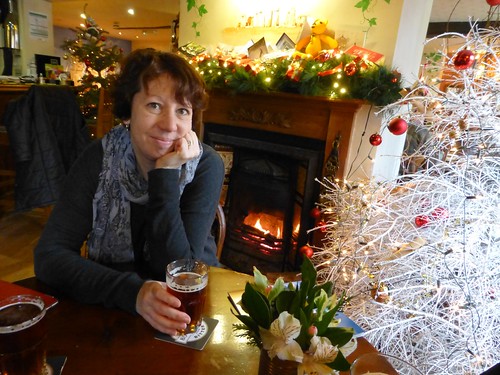


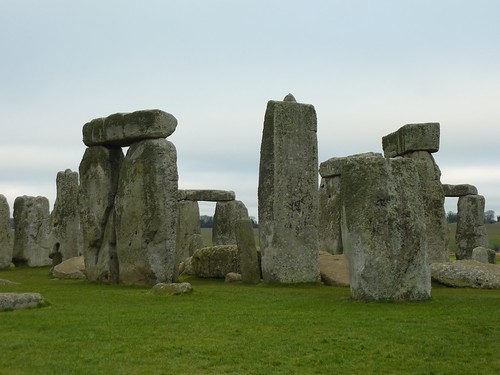
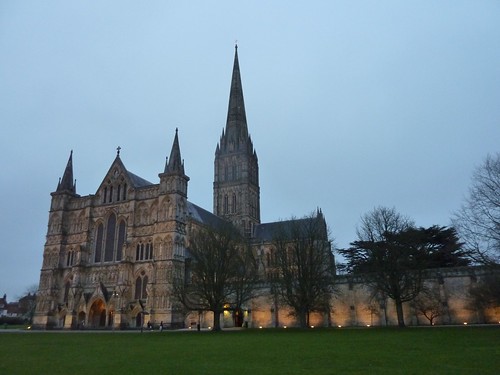



1 Comment:
What an amazing day. I sure could handle being back in that cozy pub enjoying a pint!
Thanks for being such an awesome tour guide Pam.
Post a Comment